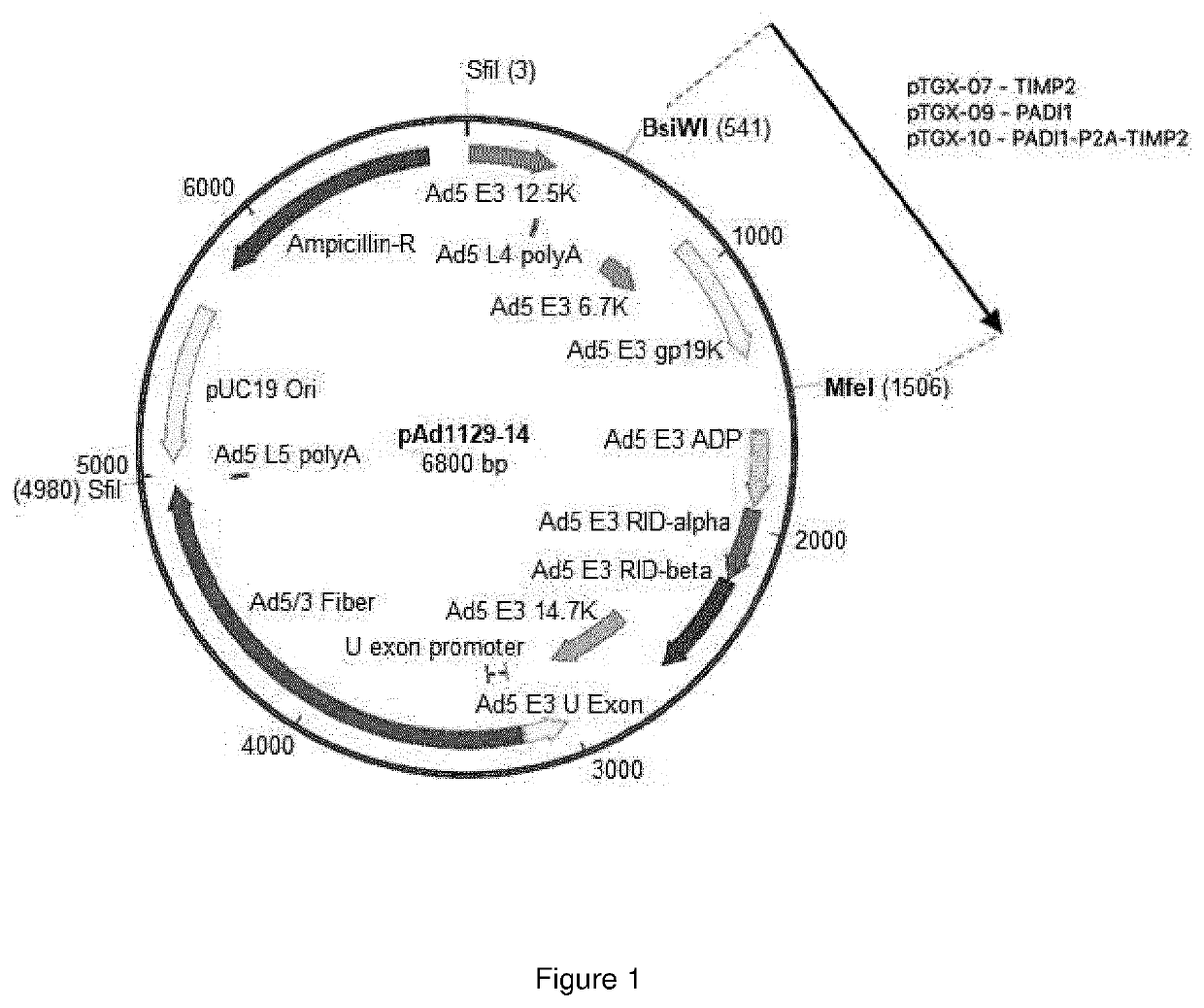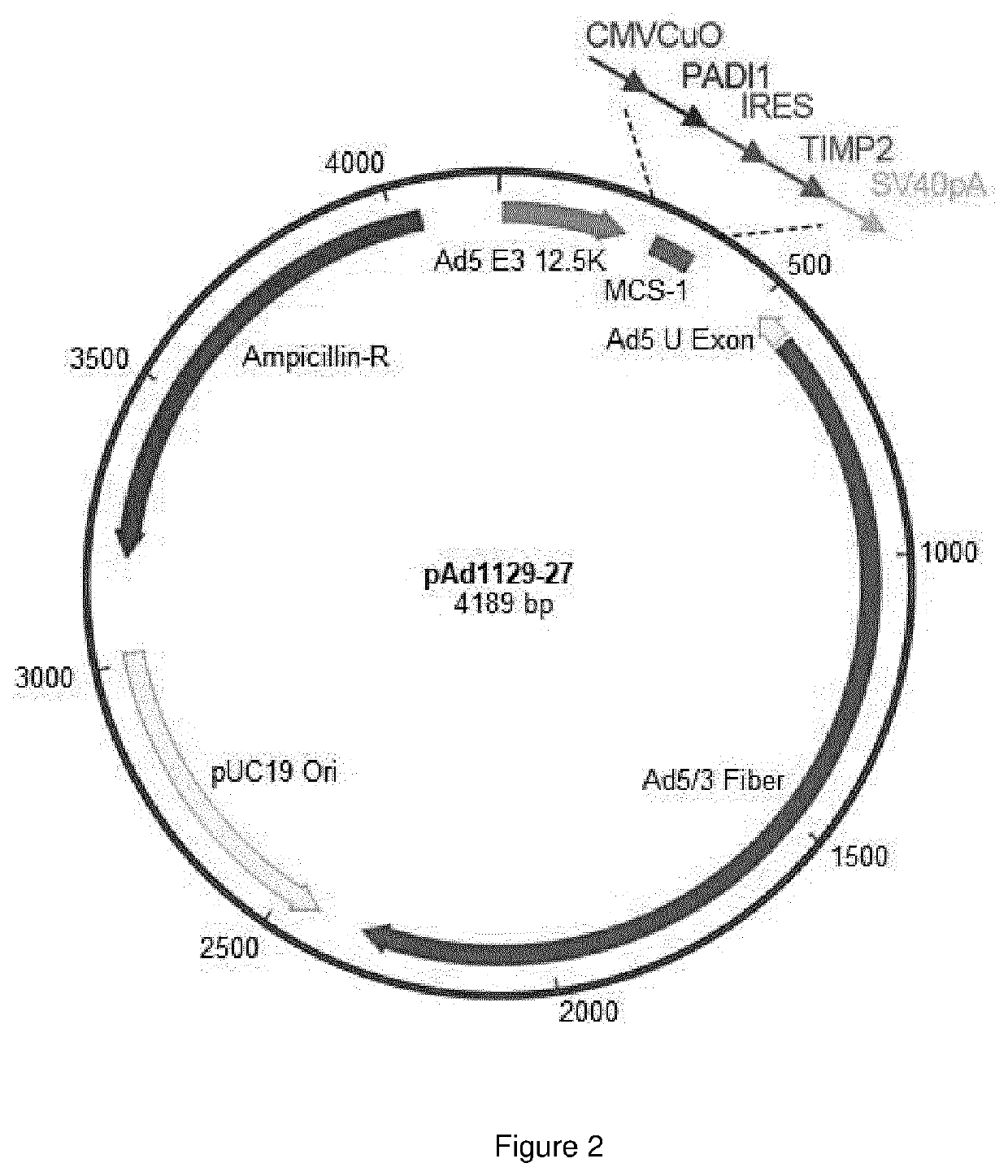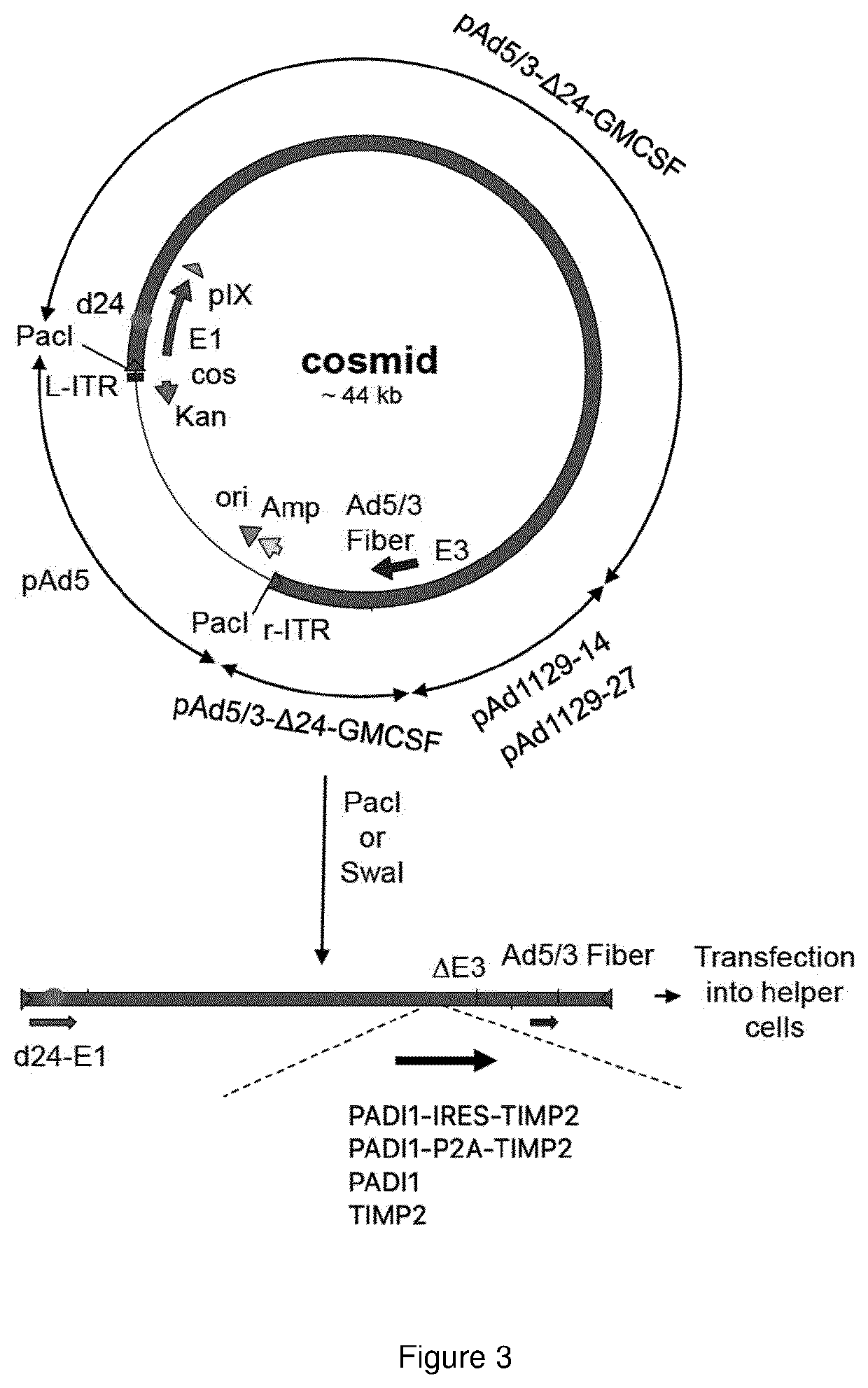Oncolytic adenoviral vector expressing peptidylarginine deiminase and tissue inhibitor of metalloproteinase
a technology of peptidylarginine deiminase and adenoviral vector, which is applied in the field of cancer therapies, can solve the problems that virus replication alone, although immunogenic, is normally not enough to induce effective anti-tumor immunity
- Summary
- Abstract
- Description
- Claims
- Application Information
AI Technical Summary
Benefits of technology
Problems solved by technology
Method used
Image
Examples
example 1
In Vitro—Cell Viability Assay (MTS)
[0263]Cell viability was evaluated by using the MTS Cell Proliferation Assay kit (Abcam) according to the manufacturer's instructions with the following modifications. MTS assay kit is a colorimetric method for the sensitive quantification of viable cells. It can be used to assess cell proliferation, cell viability and cytotoxicity. The MTS assay is based on the reduction of the MTS tetrazolium compound by viable mammalian cells to generate a colored formazan dye that is soluble in cell culture media. This conversion is thought to be carried out by NAD(P)H-dependent dehydrogenase enzymes in metabolically active cells. The formazan dye is quantified by measuring the absorbance at 490 nm. Cells were seeded in 96 well plate at a concentration of 3000 and 5000 cells / well. Treatment was initiated in a final volume of 200 μL. Cells were incubated with and without 0.1, 1, 10, 100 and 1000 viral particles (VP) of tested virus or mix of viruses. 72 hours la...
example 2
[0266]Complementary analysis on treatment efficacy focusing on evaluation of early and late apoptotic cells were carried out as well. Staining with Annexin V conjugates were carried out in order to identify cell membrane changes associated with early apoptosis. In turn, propidium iodide was used to identify cells that have lost membrane integrity (late apoptotic / necrotic cells). Cells were seeded in a 24 well plate at a density of 2.5×10{circumflex over ( )}4 cells per well for A375 cell line. Treatment with different viruses was initiated on the day of plating and the amount of apoptotic and necrotic cells was measured 72 hours after the beginning of the treatment by flow cytometry, using the dead cell apoptosis kit, according to the manufacturer's instructions.
[0267]Double transgene virus coding for PADI1 and TIMP2 (TGX-10 and TGX-12) showed anti-cancer superiority (induction of apoptotic cell death) when administered at the concentration of 10 VP / cell...
example 3
Animal Studies—Humanized Melanoma A2058 huNOG Model
[0292]NOD / Shi-scid / IL-2Rynull immunodeficient (NOG) mice received chemical myoablative treatment and were reconstituted with human stem cells by intravenous injection of one of six cord blood-derived CD34+ hematopoietic stem and progenitor cells (60,000 cells per mouse; French Blood Bank, anonymized). After these injections, flow cytometry (Atune, Life Technologies) was used to assess the composition of the human CD45+ leukocytes in the blood. Humanization rate was defined as the ratio of circulating CD45+ / total CD45+ (mCD45 and hCD45).
[0293]Humanized NOG mice were injected subcutaneously in each flank with 0.1 mL suspension containing 2×106 A2058 melanoma cells. Mice were randomized based on tumor size (left and right) and humanization rate. Tumor dimensions (length (L) and width (W)) were measured three times per week with calipers and volumes calculated by using the formula (L×W2 / 2). Mice were treated intratumorally according to ...
PUM
| Property | Measurement | Unit |
|---|---|---|
| volumes | aaaaa | aaaaa |
| pH | aaaaa | aaaaa |
| volume | aaaaa | aaaaa |
Abstract
Description
Claims
Application Information
 Login to View More
Login to View More - R&D
- Intellectual Property
- Life Sciences
- Materials
- Tech Scout
- Unparalleled Data Quality
- Higher Quality Content
- 60% Fewer Hallucinations
Browse by: Latest US Patents, China's latest patents, Technical Efficacy Thesaurus, Application Domain, Technology Topic, Popular Technical Reports.
© 2025 PatSnap. All rights reserved.Legal|Privacy policy|Modern Slavery Act Transparency Statement|Sitemap|About US| Contact US: help@patsnap.com



